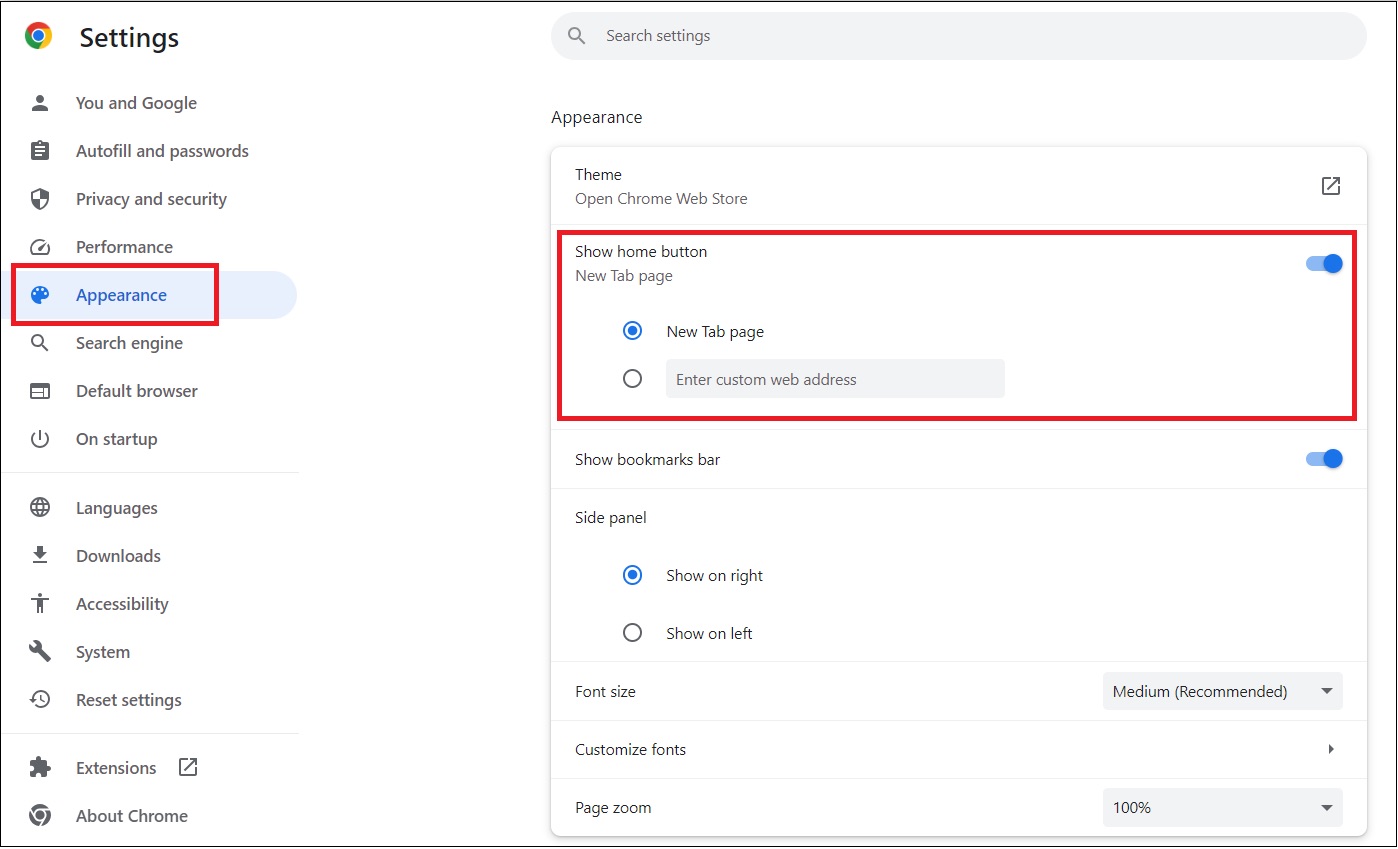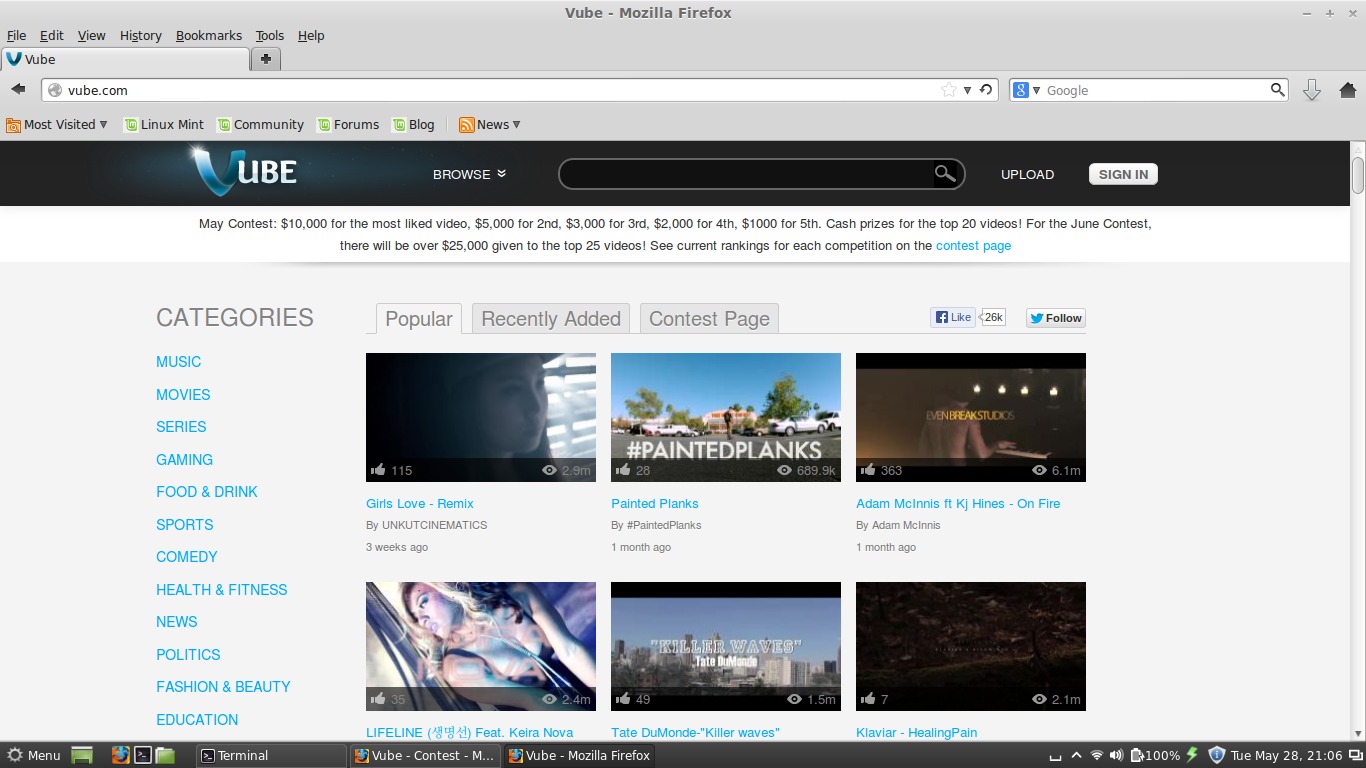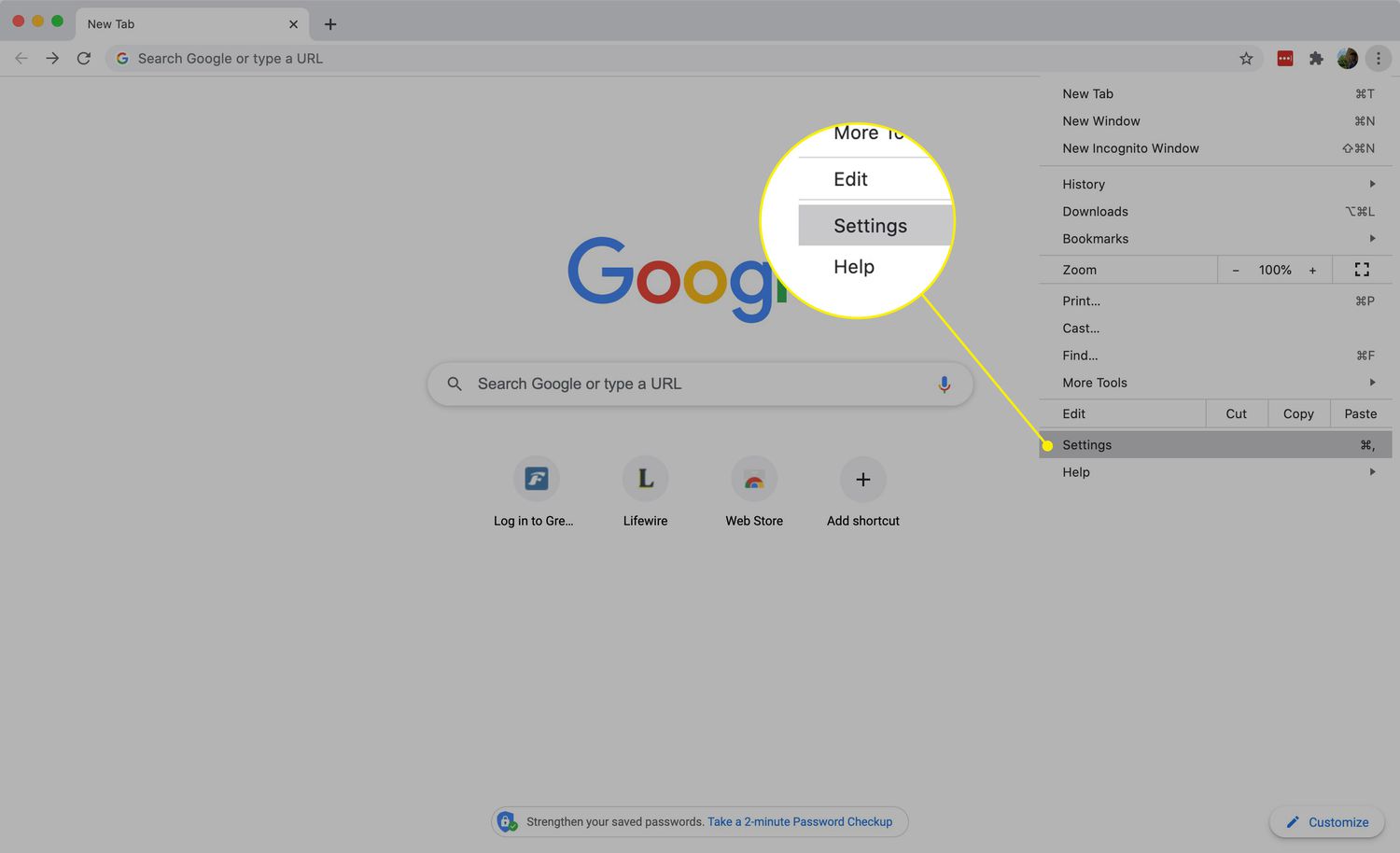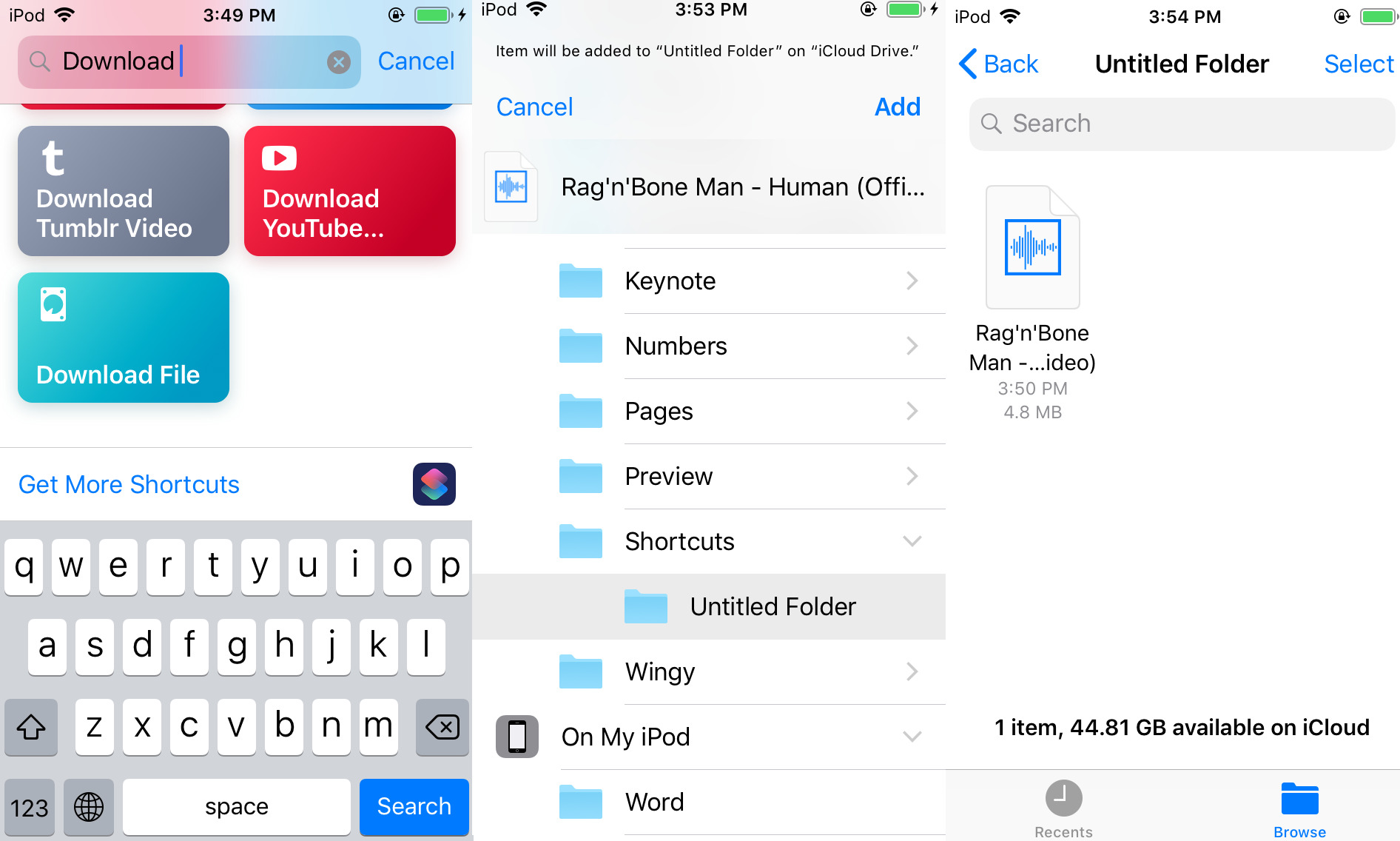Introduction
Welcome to the world of the internet, where the click of a button opens up a gateway to a vast array of information. Have you ever wondered what happens when you enter a URL in your browser? How does the browser know where to go and fetch the webpage you’re looking for? In this article, we’ll explore the fascinating journey of a URL as it makes its way through various stages to finally render the webpage on your screen.
The URL, or Uniform Resource Locator, is the address that you type into your browser’s address bar. It serves as a unique identifier for a webpage, allowing the browser to locate and fetch the desired content. But how does this process actually work? Let’s dive in and unravel the mysteries behind the scenes.
The first thing your browser does when you enter a URL is interpret the components of the address. This includes the protocol (such as HTTP or HTTPS), the domain name (e.g., www.example.com), and any additional path or query parameters. Once your browser understands the URL, it can begin the process of fetching the webpage.
Now, let’s take a closer look at each stage of this fascinating journey. From DNS lookup to establishing a connection, from requesting the webpage to rendering its contents, join us as we uncover the inner workings of the internet. By the end of this article, you’ll have a deeper understanding of what goes on behind the scenes when you enter a URL in your browser. So, let’s get started!
The URL (Uniform Resource Locator)
The URL, or Uniform Resource Locator, is a string of characters that serves as the address for a specific resource on the internet. It gives your browser the information it needs to locate and retrieve the webpage you’re looking for.
A URL typically consists of several components. First, there’s the protocol, which specifies the rules and format for communication between your browser and the web server. The most common protocol is HTTP (Hypertext Transfer Protocol), but you might also come across HTTPS (HTTP Secure) for encrypted connections.
Next, you have the domain name, also known as the host, which is the human-readable name associated with an IP address. It’s what you see in the address bar, like “www.example.com.” The domain name is registered and managed by a domain name registrar and must be unique.
In addition to the domain name, a URL might include additional path segments that specify the specific location of a resource within a website. For example, “www.example.com/blog/article” would direct your browser to a specific article within the blog section of the example website.
Query parameters are another crucial component of a URL. These parameters are appended to the end of a URL with a question mark and consist of key-value pairs. They provide additional information to the web server, such as search queries or user preferences. For instance, a URL might include “?search=SEO” to indicate that the user is searching for SEO-related content on the website.
Finally, there can be an optional fragment identifier, indicated by the “#” symbol, which points to a specific section within a webpage. This allows users to navigate directly to a particular section of a page, such as an anchor link within a long blog post.
Understanding the structure and components of a URL is essential for both users and developers. For users, it helps in navigating the web and accessing the desired content. Developers, on the other hand, need to be familiar with URL structure to create and manage websites effectively.
In the next section, we’ll take a closer look at how your browser goes about locating and retrieving the webpage associated with the URL you enter, through a process known as DNS lookup. So, let’s dive in!
The Browser
The browser is the software application that allows users to access and view webpages on the internet. It acts as the intermediary between the user and the web server, facilitating the retrieval and rendering of web content. When you enter a URL in your browser’s address bar, it sets off a chain of events that ultimately leads to the display of the webpage in your browser window.
Modern browsers, such as Google Chrome, Mozilla Firefox, and Safari, offer a variety of features and functionalities to enhance the user experience. They support HTML, CSS, JavaScript, and other web technologies, allowing websites to be rendered and interacted with seamlessly.
When you enter a URL, the browser starts by parsing the URL to extract its different components, such as the protocol, domain name, path, query parameters, and fragment identifier. It then uses this information to initiate the process of fetching the webpage.
One of the key tasks of the browser is to perform a DNS (Domain Name System) lookup. DNS is like a phonebook for the internet, translating domain names into their corresponding IP addresses. The browser sends a DNS request to the DNS server, which then responds with the IP address of the web server associated with the domain name. This IP address is necessary for establishing a connection with the web server.
Once the browser has obtained the IP address through DNS lookup, it proceeds to establish a connection with the web server using the specified protocol, usually HTTP or HTTPS. This connection is made through a series of requests and responses between the browser and the server.
After successfully establishing a connection, the browser sends an HTTP request to the web server, requesting the specific resource associated with the URL, such as an HTML file or an image. This request includes various headers that provide additional information to the server, such as the browser type and capabilities.
The web server processes the request and generates an HTTP response, which contains the requested resource and its accompanying metadata. This response is sent back to the browser, which then receives and processes it.
Once the browser has obtained the HTML, CSS, and JavaScript files that make up the webpage, it begins the process of rendering. The browser parses the HTML and constructs a Document Object Model (DOM), which represents the structure and content of the webpage. It then downloads and processes any external stylesheets, scripts, images, and other resources referenced in the HTML.
Finally, the browser combines the rendered DOM with the downloaded resources to display the webpage on your screen. It applies the stylesheets to determine the layout, executes the JavaScript code to add interactivity, and renders the images and other media elements.
That’s a brief overview of how the browser works behind the scenes to fetch and render webpages. In the next section, we’ll delve into the DNS lookup process in more detail. So, let’s continue our journey into the inner workings of the internet!
DNS Lookup
When you enter a URL in your browser, one of the first steps it takes is performing a DNS (Domain Name System) lookup. DNS is a fundamental protocol that translates domain names, like “www.example.com,” into their corresponding IP addresses, which are numerical identifiers used to locate resources on the internet. This process allows your browser to establish a connection with the correct web server and retrieve the requested webpage.
So, how does DNS lookup work? Let’s explore the steps involved:
- Your browser checks its local DNS cache, a temporary storage of previously resolved domain names and their IP addresses. If the domain name is found in the cache and its IP address is still valid, the browser can proceed directly to establishing a connection. This caching mechanism helps improve efficiency and reduce network traffic.
- If the domain name is not found in the local cache or its entry has expired, the browser sends a DNS query to a DNS resolver. The DNS resolver is typically provided by your internet service provider (ISP) or a public DNS resolver, such as Google DNS or OpenDNS. The query contains the domain name that needs to be resolved.
- The DNS resolver receives the query and begins the recursive process of resolving the domain name. It first checks its own cache to see if the IP address is already stored. If not, it starts traversing the DNS hierarchy to find the authoritative DNS server for the domain.
- The DNS resolver sends iterative queries to different DNS servers, starting with the root DNS servers. These root servers maintain information about the top-level domains (such as .com, .org, .net) and direct the resolver to the appropriate top-level domain (TLD) server.
- The TLD server manages the domain’s extension (e.g., .com) and provides the resolver with the IP address of the authoritative DNS server responsible for the specific domain. The resolver then queries the authoritative DNS server directly.
- The authoritative DNS server holds the final and most up-to-date information about the domain name. It responds to the resolver’s query with the IP address associated with the domain.
- The DNS resolver receives the IP address and stores it in its cache for future reference. It then returns the IP address to the browser.
With the IP address of the web server in hand, the browser can now establish a connection and proceed with the HTTP request to fetch the webpage.
DNS lookup is a critical step in the process of accessing a webpage. It ensures that the browser connects to the correct server and retrieves the desired content. It may seem like a complex process, but it happens within a matter of milliseconds, thanks to the efficient design of the DNS infrastructure.
In the next section, we’ll explore the next steps in the journey of fetching a webpage, including establishing a connection and requesting the webpage. So, let’s continue our exploration of the inner workings of the internet!
Establishing a Connection
Once your browser has obtained the IP address of the web server through the DNS lookup process, the next step is to establish a connection. This connection allows for the exchange of data between your browser and the web server, ultimately leading to the retrieval of the requested webpage.
The most common protocol used for establishing connections is HTTP (Hypertext Transfer Protocol) or its secure version, HTTPS (HTTP Secure). These protocols define the rules and format for communication between your browser and the web server.
Here’s a high-level overview of the steps involved in establishing a connection:
- Your browser initiates a TCP (Transmission Control Protocol) handshake with the web server. TCP is a reliable and connection-oriented protocol that ensures the delivery of data packets in the correct order.
- The handshake begins with the browser sending a SYN (synchronize) packet to the web server, indicating its desire to establish a connection.
- The web server responds with a SYN-ACK (synchronize-acknowledge) packet, acknowledging the browser’s request and sending its own synchronization information.
- The browser sends an ACK (acknowledge) packet to confirm receipt of the web server’s response.
- With the three-way handshake completed, a TCP connection is established between your browser and the web server. This connection allows for the reliable transmission of data.
Once the TCP connection is established, your browser can proceed with the HTTP request to fetch the specific resource associated with the URL you entered. This request includes various headers that provide additional information to the web server, such as the browser type, supported languages, and cached data.
Establishing a connection is an essential step in the process of retrieving a webpage. It ensures a reliable and secure channel for transferring data between your browser and the web server. The TCP handshake mechanism guarantees the integrity and order of transmitted packets, enabling smooth communication.
In the next section, we’ll explore how your browser sends the HTTP request and how the web server processes it to retrieve the requested webpage. So, let’s continue our journey into the intricate workings of the internet!
Requesting the Webpage
Once the connection between your browser and the web server is established, your browser can proceed with the crucial step of requesting the webpage. This process involves sending an HTTP (Hypertext Transfer Protocol) request to the web server, specifying the resource you want to retrieve.
The HTTP request is composed of several components and headers that provide information to the web server about the type of request being made and any additional requirements or preferences. Here’s an overview of the steps involved:
- Your browser constructs an HTTP request that includes the HTTP method (such as GET, POST, or HEAD), the URL of the resource you want to fetch, and the version of the HTTP protocol being used.
- The request also contains various headers that provide additional information to the web server. These headers can include the user agent (identifying the browser and operating system), Accept-Language (indicating the preferred language for the response), and Cookie (for sending session information).
- In some cases, the request might also include a request body, which contains data to be sent to the web server. This is commonly used with HTTP methods like POST, where form data or other payloads need to be transmitted.
- Your browser sends the complete HTTP request to the web server over the established TCP connection.
Upon receiving the HTTP request, the web server processes it and determines how to handle the specific resource you’re requesting. The server might perform various operations, such as authentication, authorization, data retrieval, or server-side processing, depending on the nature of the request.
Once the web server has processed the request, it generates an HTTP response that contains the requested resource, along with relevant metadata. This response includes an HTTP status code, such as 200 OK for a successful request or 404 Not Found if the resource could not be located. The response headers may also provide information about caching, content types, and server information.
The web server sends the HTTP response back to your browser over the established TCP connection. Your browser then receives and processes the response to retrieve the requested webpage and its associated resources, such as HTML, CSS, JavaScript files, and media content.
Requesting the webpage is a critical step in the process of fetching content from a web server. The HTTP request provides essential instructions and preferences to the server, allowing it to respond appropriately with the requested resource.
In the next section, we’ll explore how the web server processes the HTTP request and retrieves the requested webpage, bringing us closer to the final stage of rendering the webpage in your browser. So, let’s continue our journey into the inner workings of the internet!
Server Processes the Request
Once the web server receives the HTTP request from your browser, it initiates a series of processes to handle and fulfill the request. These processes can vary depending on the server configuration and the type of resource being requested, but generally involve several key steps to retrieve the requested webpage. Let’s take a closer look at how the server processes the request:
1. Initial request handling: Upon receiving the HTTP request, the server first performs initial request handling tasks, such as parsing the request, extracting the requested resource’s information, and verifying its accessibility and permissions.
2. Application processing: If the requested resource involves any server-side processing, such as dynamic content generation or data retrieval from a database, the server passes the request to the appropriate application or script. The application processes the request and generates the necessary HTML, data, or other content.
3. Retrieve static files: For static resources, such as HTML, CSS, JavaScript files, and media assets, the server retrieves the file from the appropriate location on the server’s file system. These files are typically pre-existing and do not require any additional processing.
4. Authentication and authorization: In some cases, the server may need to perform authentication and authorization checks to ensure that the user has the required permissions to access the requested resource. This process involves verifying user credentials or session information.
5. Server-side scripting: If the requested resource involves server-side scripting, such as PHP, ASP.NET, or Node.js, the server passes the request to a scripting engine. The engine executes the script and generates dynamic content, which may include HTML, data, or other formats.
6. Database queries: If the server-side application or script requires data from a database, the server connects to the database and executes the necessary queries. The retrieved data is then used to generate the requested content.
7. Generate the HTTP response: Once the server has processed the request and gathered all the necessary resources or generated the required content, it constructs the HTTP response. The response includes the requested resource, relevant metadata, and headers, such as the content type and cache control directives.
8. Sending the HTTP response: After generating the HTTP response, the server sends it back to your browser over the established TCP connection. The response is transmitted as a series of data packets, ensuring the reliable delivery of the response to your browser.
By processing the request and generating the appropriate HTTP response, the server fulfills your browser’s request for the webpage. The server’s role is crucial in serving as the gateway to resources, handling user authentication, executing server-side scripts, and interacting with databases.
In the next section, we’ll explore how your browser retrieves the requested webpage and begins the process of rendering its content. So, let’s continue our journey into the fascinating world of the internet!
Retrieving the Webpage
Once the server has processed the request and generated the appropriate HTTP response, your browser can retrieve the webpage and its associated resources. This retrieval process involves downloading the necessary files from the server and assembling them to render the webpage on your screen. Let’s explore how your browser retrieves the webpage:
- Downloading HTML: The first step in retrieving the webpage is downloading the HTML file specified in the HTTP response. The HTML file contains the structure and content of the webpage.
- Processing HTML: Once the HTML file is downloaded, your browser begins to process it. It parses the HTML and constructs a Document Object Model (DOM), representing the structure of the webpage. This DOM will be used to render the content and execute any JavaScript code.
- Downloading external resources: While processing the HTML, your browser encounters references to external resources such as CSS files, JavaScript files, images, and other media. It starts downloading these resources in parallel to ensure efficiency.
- Processing CSS: After downloading the CSS files, your browser applies the styles to the HTML elements based on the selectors and rules defined in the CSS. This process determines the layout, colors, fonts, and other visual aspects of the webpage.
- Executing JavaScript: If the webpage contains JavaScript code, your browser executes it. JavaScript can add interactivity, handle user events, modify the DOM, and fetch additional data from the server.
- Rendering the webpage: Once the HTML, CSS, and JavaScript have been processed, your browser combines them to render the webpage on your screen. It displays the text, images, videos, and other media elements according to the defined styles, layout, and interactivity.
During the retrieval process, your browser leverages various techniques to optimize performance, such as caching and compression. It may cache certain resources to avoid unnecessary downloads and use compression algorithms to reduce the size of transferred data, ensuring faster loading times for subsequent visits to the same webpage.
Retrieving the webpage involves downloading the necessary files, processing them, and assembling them to create the visual representation of the webpage. It’s a complex process that your browser executes seamlessly to provide you with a smooth and interactive browsing experience.
In the next section, we’ll take a closer look at how your browser renders the webpage and displays it on your screen. So, let’s continue our exploration of the fascinating world of the internet!
Webpage Rendering
After retrieving the necessary resources and processing them, your browser moves on to the final stage of the webpage’s journey: rendering. Webpage rendering involves taking the downloaded HTML, applying styles, executing scripts, and displaying the content on your screen. Let’s explore how your browser handles webpage rendering:
- Constructing the Document Object Model (DOM): As mentioned earlier, your browser parses the HTML file and constructs a Document Object Model (DOM), which represents the structure of the webpage. The DOM serves as a tree-like structure, with each node representing an element or a piece of content on the webpage.
- Applying styles: Once the DOM is constructed, your browser applies the CSS (Cascading Style Sheets) styles to the corresponding elements. The styles define various aspects of the webpage’s appearance, such as colors, fonts, layout, and positioning. This process determines how the content is visually presented.
- Laying out the content: After the styles are applied, your browser calculates the positions and dimensions of each element, taking into account factors like the box model, margins, paddings, and display properties. This step ensures that the content is properly positioned within the webpage’s layout.
- Loading and executing scripts: If the webpage contains JavaScript code, your browser loads and executes it. JavaScript can manipulate the DOM, handle user interactions, and dynamically update the webpage’s content and behavior. It adds interactivity and enhances the user experience.
- Rendering the content: With the DOM constructed, the styles applied, and the scripts executed, your browser begins the process of rendering the visible content. It converts the DOM and its associated styles into pixels on your screen, following a process known as the painting or rendering pipeline.
- Displaying the webpage: Finally, your browser displays the rendered content on your screen. You can now see the text, images, videos, and other media elements arranged according to the specified styles and layout. The webpage is now ready for interactivity and user engagement.
The rendering process aims to provide a visually appealing and interactive experience for users. It ensures that webpages are displayed consistently across different devices and browsers, adapting to varying screen sizes and resolutions.
Browsers optimize rendering performance by employing techniques such as preloading resources, lazy loading content, and leveraging hardware acceleration. These techniques help reduce loading times and enhance smooth scrolling and responsive interactions.
In summary, webpage rendering involves parsing HTML, applying styles, executing scripts, and converting the result into a visual representation on your screen. It’s a complex process that browsers execute quickly and efficiently to deliver the webpages you interact with every day.
In the next section, we’ll wrap up our exploration of the journey of a URL and summarize our findings. So, let’s conclude our fascinating journey into the inner workings of the internet!
Conclusion
Understanding what happens when you enter a URL in your browser can give you a deeper appreciation for the intricate processes that occur behind the scenes of web browsing. From the URL interpretation to DNS lookup, establishing a connection, requesting the webpage, server processing, retrieving resources, and finally rendering the webpage, it’s a complex journey that happens in a matter of milliseconds.
The URL serves as the address that directs your browser to the desired webpage. It consists of various components, such as the protocol, domain name, path, query parameters, and fragment identifier. The browser plays a crucial role in interpreting the URL, initiating the browser-server communication, and processing the received data.
Through DNS lookup, the browser translates the domain name into an IP address, allowing for the establishment of a connection with the web server. The server processes the HTTP request, retrieves the requested webpage, and generates an HTTP response that contains the desired content.
Your browser retrieves the webpage by downloading the necessary resources, processing HTML, applying styles, executing scripts, and finally rendering the content on your screen. With the webpage rendered, you can interact with it and navigate through the provided links and functionality.
In conclusion, the journey of a URL from the browser to the rendered webpage involves a series of intricate steps, optimizations, and technologies. Through understanding this process, you gain insight into the complexities of web browsing and the efforts made to deliver web content efficiently and seamlessly.
The internet and web technology continue to evolve, bringing new advancements and innovations. Yet, the fundamental principles of URL interpretation, server communication, and webpage rendering remain constant, enabling us to explore and access a vast world of information with a simple click of a button.

























